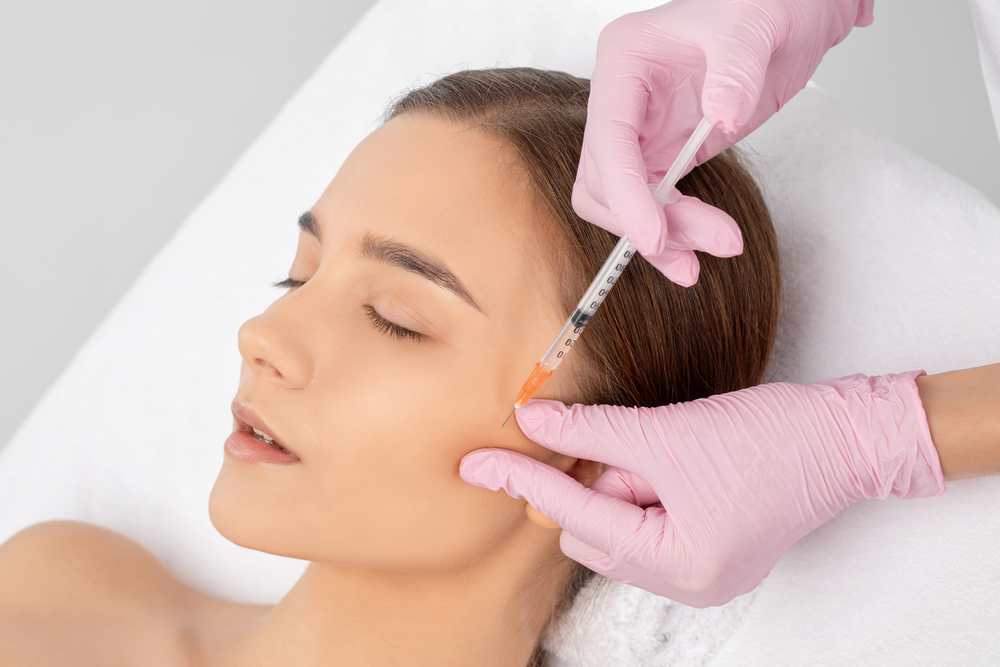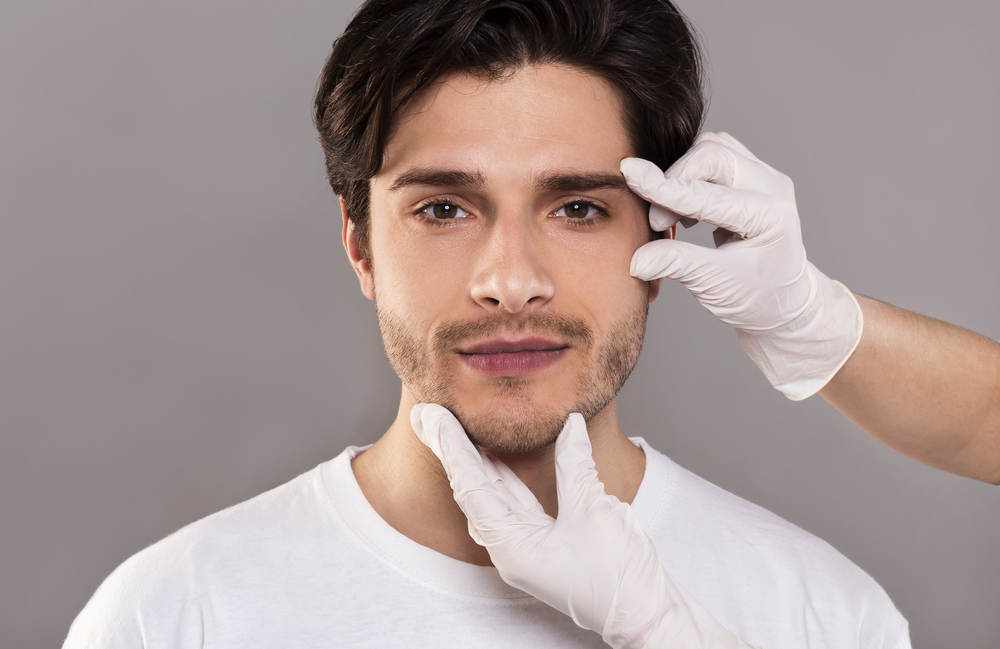Cheek fillers are a great way to enhance your natural beauty by giving your face more definition, plumper cheeks or subtle volume without downtime or surgery. The beauty of cheek fillers is that they’re safe, treatment sessions are quick and they can be tailored to your specific needs.
However, one of the things we often get asked about them is, “How long do cheek fillers last?”. It’s a valid and important question, as it will influence how often you need to come in for sessions.
The short answer is that most patients’ cheek fillers last anywhere from 6 to 18 months. However, there are several factors at play which influence how long they will last, and some treatments can even last up to 24 months.
We are all about setting expectations and allowing you to plan your schedule around them. We want you to get the most out of your cheek dermal filler injections, and we have put together this post to answer all your questions about cheek dermal filler longevity, and what you can do to make it last longer.
How Long Do Cheek Fillers Last?
No non-surgical cosmetic cheek enhancement or dermal fillers last forever, and how long your cheek augmentation lasts is influenced by multiple factors.

Filler Material
Cheek fillers are crafted from different materials, each with its unique properties and lifespan. For instance, Hyaluronic Acid fillers (HA) are some of the most popular cheek filler materials and are renowned for their safety and natural compatibility with the body, as it’s naturally found in the skin. The lifespan of HA fillers ranges from 6 to 18 months, as the body gradually absorbs the substance.
Alternatively, fillers made from Poly-L-lactic acid or Calcium hydroxylapatite are bio-stimulatory fillers. These don’t just add or restore volume but they also stimulate the body’s collagen production, offering results that can last up to two years or more. That’s because they help to build a collagen scaffold that remains even as the filler itself is metabolized by the body.
Everyone’s situation is different, so speak to your injector. They will be able to advise you on which type of filler is right for you and how often you should book a touch-up treatment.
Treatment Area
The cheek area is less affected by the constant movements that other parts of the face endure, such as the lips or the areas around the mouth. This reduced movement means that fillers in the cheeks are not metabolized as quickly, allowing them to last longer than other fillers. However, even within the cheek area, the specific site of injection and the individual’s facial movements can affect filler longevity.
The areas typically treated with this type of dermal filler are as follows:
- Cheekbones: Enhancing the cheekbones is a common reason for getting cheek fillers. Filler can be placed directly on the cheekbones to add definition and create a more sculpted look.
- Midface Area: As we age, the midface area can lose volume, leading to a more sunken appearance.
- Under Eye Area: Sometimes, cheek fillers are also used to address hollowness or dark circles under the eyes. By adding volume to the tear troughs, it can reduce the appearance of under-eye bags and dark circles.
- Nasojugal Fold: This is the area between the lower eyelid and the cheeks. Filling this area can smooth the transition from the under-eye to the cheek.
- Cheek Hollows: For some individuals, the area below the cheekbones can appear hollow. Fillers can be used to add volume to these areas, giving a fuller, more balanced facial appearance.
- Lateral Cheek Area: Sometimes, fillers are also applied to the outer sides of the cheeks to enhance facial contours and create a more harmonious balance with other facial features.
Areas of the face that are more dynamic, meaning they move more due to facial expressions, might break down filler material faster. This is different for everyone.
How Fast Your Body Absorbs Fillers

Individual differences in metabolism can greatly affect how long cheek fillers last. People with a faster metabolism tend to break down filler material more quickly. It’s true! High levels of physical activity can also contribute to a faster metabolism. Athletes or highly active individuals might notice that their fillers don’t last as long due to their increased metabolic rate. This is why we work out a treatment plan during your initial consultation to ensure that the treatment is appropriate for you.
Injection Technique
The technique of the injector plays a significant role in the longevity of dermal fillers. Expertise and precision in the placement of fillers can greatly impact their effectiveness and duration. Proper technique ensures that the filler is deposited at the optimal depth and location for maximum support and integration with the facial tissues. Additionally, an experienced injector can strategically place the filler to complement the natural contours of the face, enhancing longevity through reduced movement and more efficient use of the product.
How Often Should You Get Cheek Fillers
The frequency of cheek filler treatments depends on the initial results and the longevity of the chosen filler material. As the effects of fillers begin to diminish around the 6 to 18-month mark, you may opt for a follow-up treatment to maintain volume and contour. For longer-lasting fillers, the interval between treatments can extend beyond two years.
What Happens When Cheek Fillers Wear Off
As fillers in your cheeks dissolve over time, they gradually return to their pre-treatment state, with no permanent change to facial structure. This process allows you to choose to refresh the treatment or let it fade naturally. After fillers are fully absorbed, areas treated with hyaluronic acid filler revert to their original appearance without leaving residue.
If large volumes of fillers have been used over time, the skin may have stretched to accommodate the added volume. Younger skin, which typically has more collagen and elastin, is likely to return to its original state after the filler is absorbed. However, older skin, which has less elasticity, might not rebound as effectively.
Making Cheek Fillers Last Longer
There are certain things that you can do to ensure that your cheek fillers last long.
Stay Properly Hydrated
Proper hydration is essential for maintaining skin health and can indirectly impact the longevity of filler results. Drinking ample water helps maintain the skin’s elasticity and volume, supporting the filler’s integration and appearance. Hydrated skin is more likely to hold onto the volumizing effects of fillers, providing a plump and youthful look for longer.

Avoid the Extended Exposure to the Sun
Prolonged sun exposure can accelerate the breakdown of collagen and elastin in the skin, affecting not only skin health but also the longevity of fillers. UV rays can degrade the quality of the filler material over time, leading to a faster decrease in volume and effect. Using a high-SPF sunscreen, wearing hats, and seeking shade when outdoors can protect the skin and extend the life of facial fillers.
Use Collagen Boosting Skincare
Incorporating skincare products that stimulate collagen production can complement the effects of fillers. Ingredients such as retinol, vitamin C, peptides, and hyaluronic acid are known for their collagen-boosting properties. Regular use of these products can improve skin firmness and texture, enhancing the overall appearance and durability of cheek fillers. At Bloom, we carry AlumierMD skincare to compliment your cheek fillers.
Regular Top-ups and Touch-ups
To maintain the desired volume and contour, scheduling regular top-up sessions before the filler completely metabolizes can be beneficial. These touch-ups can address any areas where the filler has started to diminish, ensuring a continuous and natural-looking enhancement. We will discuss the optimal timing for these maintenance treatments during the initial and follow-up consultations and tailor it to your unique metabolic rate and the specific filler used.
When To Consider Cheek Fillers
Cheek fillers are a go-to for enhancing facial symmetry and volume, effectively countering aging signs like sagging and hollowness. It is a great way to give yourself a non-surgical facelift.
By smoothing wrinkles and restoring lost volume, cheek fillers provide a rejuvenating effect that can make one appear several years younger. Certain fillers also stimulate collagen production, improving skin quality over time.
They allow for precise sculpting of the facial contours, offering a lifted, more youthful appearance without altering the natural facial expressions.
As a non-surgical option, cheek fillers require almost no downtime, allowing you to resume your normal activities almost immediately. This makes it an attractive choice if you’re looking for effective, noticeable improvements without the inconvenience of a lengthy recovery.
The ability to reverse the treatment, especially with hyaluronic acid-based fillers, provides an added layer of reassurance for those uncertain about committing to permanent changes.
If you’re interested in getting cheek filler treatments or any other dermal fillers like lip fillers, nose fillers, chin fillers or complementary treatments like Botox, or if you want to make a follow-up appointment, contact Bloom Health and Wellness Studio and book an appointment. Our qualified medical professionals work with great care and discretion to ensure that you get the best, longest-lasting results from your filler treatment.
Jennifer Sinclair
Author
4/01/2024
POSTED
How Long Do Cheek Fillers Last?

I have been seeing Dr.Sinclair for many years and have been extremely impressed with the quality of service. I've always had the most natural and pleasing results.
What Our Clients Say
Dr.Sinclair constantly updates her knowledge of new products and techniques. I wouldn't go anywhere else!
What Our Clients Say
Dr.Sinclair is a true professional, intuitive and skill practitioner who acts with sensitivity and integrity at all times.